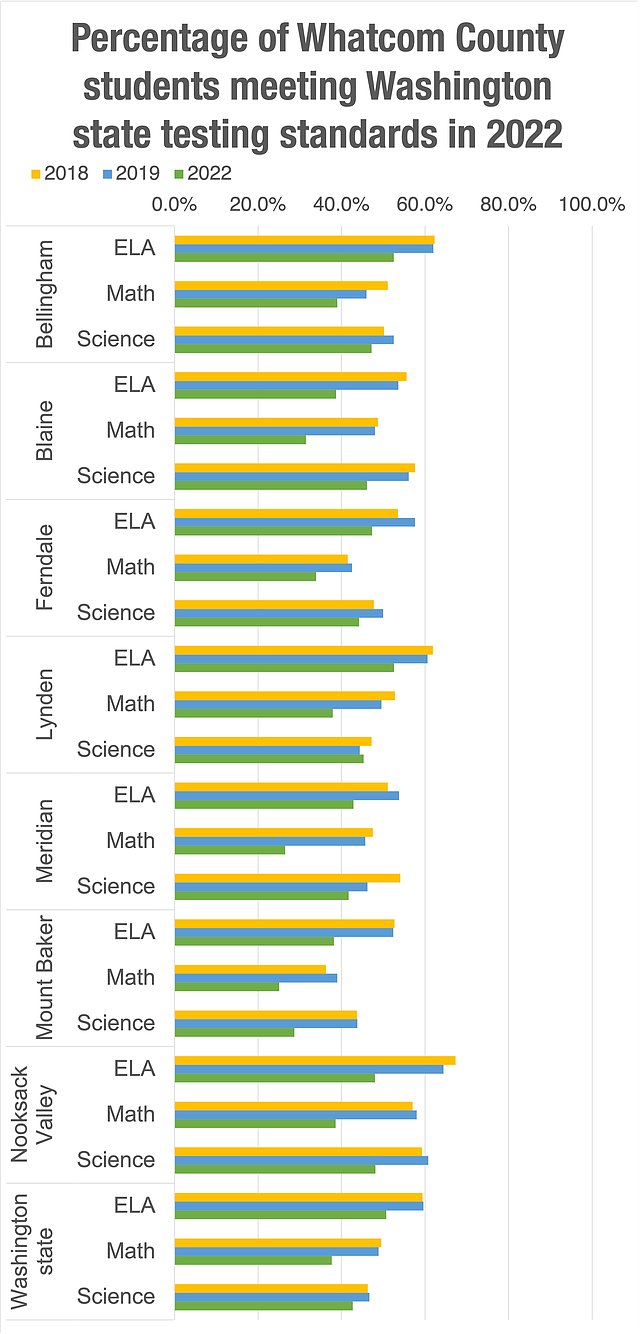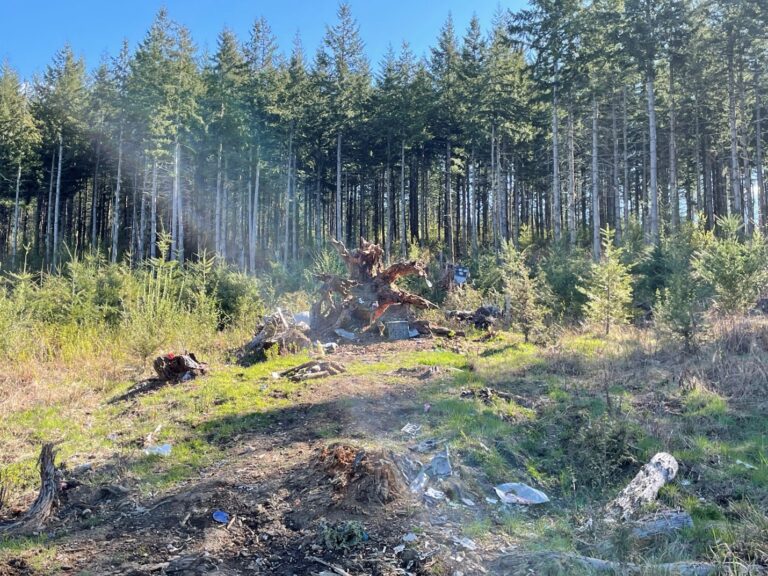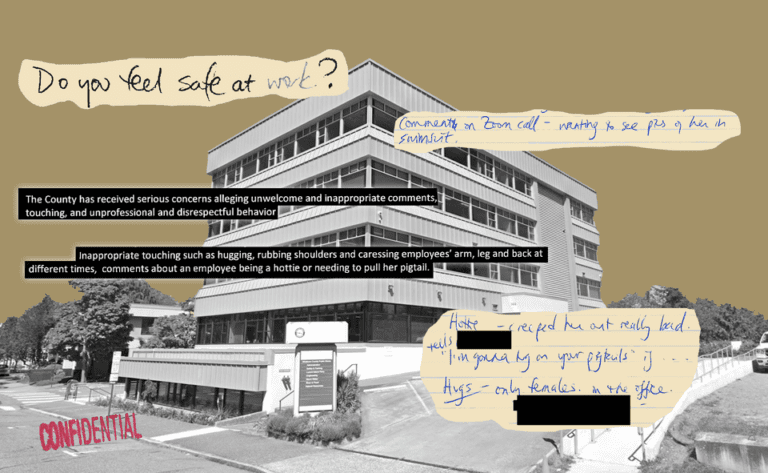The COVID-19 pandemic deprived K-12 students of a “normal” life experience and, unsurprisingly, test scores in Whatcom County and across the nation have taken a nosedive.
“They’re stark,” said Douglas Benjamin, the Bellingham Public Schools Board vice president at a Feb. 16 meeting.
Results for the Smarter Balanced Assessment (SBA) and Washington Comprehensive Assessment of Science (WCAS) exams taken in spring 2022 are in, and every single Whatcom County district saw declines across all grades in almost all subjects — English Language Arts (ELA), math and science.
Washington state canceled the spring 2020 exams and postponed the spring 2021 exams, moving them to fall 2021. Tests taken in spring 2022 marked the state’s return to its normal testing schedule and set-up in three years.
The pandemic affected kids’ achievement scores in fairly significant ways across the board, Michael Copeland, Bellingham’s deputy superintendent, said at the meeting.
Overall, in 2022, Whatcom County districts saw the smallest decline in science and the largest decline in ELA from 2019, pre-pandemic scores. Bellingham Public Schools and Lynden School District slightly out-performed the state average in all three subjects, and Nooksack Valley narrowly outperformed in math and science. Other Whatcom County districts have proficiency rates below the state average, according to data from the Washington Office of Superintendent of Public Instruction.
 Every school district in Whatcom County declined in every subject – except for Lynden in science – in the 2022 Washington state assessment. The spring 2022 exams marked the first normal exam since before the COVID-19 pandemic. Source: The Washington Office of the Superintendent of Public Instruction. (Hailey Hoffman/Cascadia Daily News)
Every school district in Whatcom County declined in every subject – except for Lynden in science – in the 2022 Washington state assessment. The spring 2022 exams marked the first normal exam since before the COVID-19 pandemic. Source: The Washington Office of the Superintendent of Public Instruction. (Hailey Hoffman/Cascadia Daily News)
Each year, students in grades 3 through 8 and 10 take the SBA and WCAS to determine growth and standing in the state. Over the last few years, most local districts have seen an overall improvement of scores until the COVID-19 pandemic shuttered schools and sent classrooms online.
Nationwide data from the Education Recovery Scorecard show that districts with more time spent in remote instruction had more achievement losses than districts that spent more time in person. However, the report concludes that school closures were not the primary factor driving achievement losses.
The report concludes that “declines in test scores were not caused solely, or even primarily, by children’s schooling experiences.” The researchers caution against relying solely on schools to “undo the uneven effects of the pandemic on children.”
“A full recovery from the pandemic will require not just well-targeted, evidence-based efforts by schools and educators, but coordinated efforts by healthcare systems, and mental health systems, social service agencies, community organizations, and other state and local agencies,” the report states.
The report also noted “the share of annual instructional budget corresponding to lost achievement is greater than the share received in federal … funding.”
Currently, local school districts are building their budgets for the 2023-2024 school year and deliberating what to do without the millions of dollars in emergency federal funding that will evaporate at the end of this school year.
Bellingham school district doesn’t have drastic plans to boost test scores, but administrators hope that with more stable education, the scores will grow.
“We’re thinking about it, in that sense, as almost a new baseline for us to now compare to moving forward,” Copeland said.
Across the nation and in Whatcom County, schools and districts with higher rates of poverty, BIPOC students and English Language Learners (ELL) fared worse.
For example, when narrowing down the data to look at individual schools within the Bellingham Public Schools, Cordata Elementary — one of the most diverse in the district — scored worse than many other schools.
None of the 56 3rd-grade students met state standards for English Language Arts. With nearly 70% of the students at Cordata classified as low-income, only 8.5% met state standards in ELA and 4.2% in math. Thirty-two percent are ELL and less than 6% of them met state standards in ELA and math.
In comparison, Silver Beach Elementary School improved its scores from 2019 for every exam except for Grade 5 ELA. Just 16% of students are classified as low-income at Silver Beach, which serves students and families who reside in and around North Lake Whatcom.
Despite the differences, the Bellingham school district said the poverty gap shrunk slightly, in contrast to the rest of Washington state where the gap grew.




